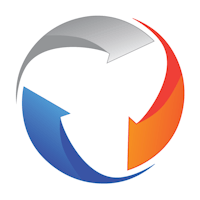Dual enrollment is surging, offering high school students a way to earn college credit and reduce education costs at a time when the value of college is under debate. But differences in standards and credit transfer practices mean some credits don’t count, leaving students with incomplete pathways to degrees or careers.
As participation rises, the challenge is not just access, but alignment. Without shared standards and interoperable credentialing systems, students can face roadblocks when moving between high schools, colleges or into the workforce. Emerging approaches in digital standards and verifiable credentials aim to create clearer pathways and help ensure that every credit has value.
Promise of Dual Enrollment Programs
Dual enrollment has grown rapidly, allowing students to earn college credit as early as their sophomore year. A recent report from Jobs for the Future and the College in High School Alliance found that dual enrollment, particularly in career and technical education programs, helps students adjust to college-level work and real-world expectations in a supportive setting.
Students who earn substantial college credit before graduation tend to have better academic outcomes, higher persistence and greater graduation rates than their peers. But a major obstacle remains: Not all credits transfer or count toward degrees, leaving many students short of their goals.
The Credit Transfer Challenge
Dual enrollment is only as valuable as the credits students can actually use. If a college or university doesn’t recognize or accept credits earned in high school, students can face disappointment and added costs.
A 2025 Public Agenda survey found that nearly 40 percent of respondents had tried to transfer college credit. Of those, 58 percent lost some credits along the way, 24 percent said only a few or none of their credits transferred, and one in five had to retake classes they’d already passed. In all, 65 percent reported at least one negative experience, highlighting just how common and costly these transfer barriers can be.
Why does this happen? The content and rigor of courses can vary between high schools and colleges, and even across higher education institutions. Without shared standards or ways to verify competencies, it’s hard for colleges to assess which credits truly count.
Emerging tools that define and verify academic standards can help bridge these gaps. By clarifying what students are expected to know and be able to do, such frameworks make it easier for colleges to recognize credits and for students to have confidence that their work will count. Approaches like the TrustEd Credential Framework use digital standards and verifiable credentials to create more predictable pathways from high school to college and, ultimately, into the workforce.
Georgia Leveraging Standards For Clarity
Georgia provides an example of how shared standards can improve clarity and credit transfer. The Georgia Department of Education (GaDOE) developed SuitCASE, the state’s digital platform for managing and distributing K-12 learning standards. SuitCASE uses the Competencies and Academic Standards Exchange (CASE) technical standard to make their academic standards machine-readable and shareable across learning platforms and systems. Because CASE is extensible, the state can also align K-12 standards with higher education and workforce expectations, helping students navigate smoother pathways from school to college and career.
“Ultimately, this process aims to demonstrate that curricula can be verified digitally, making the transfer of credits toward degree completion more reliable,” said Dr. Keith Osburn, chief information officer and deputy superintendent for technology services at GaDOE. “Additionally, it is essential to identify and address any gaps in the curriculum, ensuring it becomes more comprehensive and aligned with the necessary skills and degree requirements that lead to higher-paying jobs and more fulfilling careers.”
CASE is already widely adopted: 19 states host their own CASE servers, and all 50 states have core standards available in CASE format. The next breakthrough will come when higher education curricula are also published in CASE. This step will enable data-informed dual enrollment, faster progress to degree and greater student mobility.
Verifiable Competencies
The University of Georgia (UGA) now provides every student with a Comprehensive Learner Record (CLR), a digital credential that integrates coursework with co-curricular activities. This record showcases validated competencies and achievements in a customizable, visual format, helping students communicate their strengths to colleges, employers and graduate programs. The approach follows the CLR Standard, which provides a framework for capturing and sharing student learning achievements.
“At the University of Georgia, we know our graduates are already developing essential skills like critical thinking, leadership, and communication,” said Marisa Anne Pagnattaro, UGA’s vice president for instruction and senior vice provost for academic planning. “The Comprehensive Learner Record will give students a way to reflect on and clearly communicate those competencies. By capturing the skills gained inside and outside the classroom, this innovative digital credential will make it easier to convey their value to future employers.”
By structuring student achievements in a verifiable, standardized format, the university is laying a foundation for aligning with broader standards frameworks
Making Every Credit Count
Dual enrollment should offer more than just a head start; it should provide real progress toward a college degree or career. When credits are portable and credentials are transparent, students don’t have to worry about retaking classes or starting over at a new institution.
Emerging innovations make it possible to build transparent, skill-based education-to-career pathways that empower learners and strengthen the workforce. As more states and universities adopt data-informed, standards-aligned systems, students are more likely to have every credit count, every skill recognized and a clearer path to success.
Building pathways that work for every learner takes collaboration. Learn more about digital credentials, student mobility and digital curriculum verification levers in the 1EdTech community. Join us at the 1EdTech Digital Credentials Summit in Philadelphia, February 18-20, 2026.



